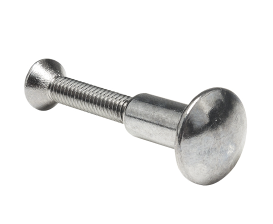Raw materials are transformed into precisely machined rotational parts through the process of CNC turning. When carried out appropriately, it is a process that is both efficient and optimized. To ensure that your CNC Plastic Machining lathe operations are successful, here are some key factors to consider. The Capabilities of A Machine ToolIt is necessary for the CNC Plastic Machining lathe to maintain a capacity that is suitable for the work that is required. Perform an analysis of the device based on: Over the bed swing – maximum diameter of the part"Maximum part length" is the distance between the centers. The rate of material removal requires a certain amount of horsepower. To facilitate rapid tool movements and rapid traverse rates—Choose machines that have a capacity that is greater than what is required for some margin. A workpiece that has been properly fixed allows for the removal of material in an effective manner while simultaneously reducing vibration and deflection. Method of holding (chucks, centers, mandrels) is one of the factors that determine the fixture. Rigidity is defined as the capacity to withstand cutting forces. Tooling clearances are included in accessibility. Accuracy and repeatability in the lathe operations of locating points to achieve secure holding, vibration reduction, and chip evacuation, lathe cutting tools should be optimized.
The Selection of Tools
The generation of turned features that are accurate in terms of their dimensions requires the use of appropriate cutting tools. Evaluation of the tools: For the duration of the tool's life, the material and coatingRake angles are used to apply cutting forces. Finishing requirements based on the nose radiusThere are two types of geometries: roughing and finishing. Choose the appropriate tooling to achieve a balance between machining performance, operating costs, and part quality. Process Optimization for Machining DevicesMachining that is efficient starts with optimizing the cut logic, which includes the following: Choosing between roughing and finishing passesThe depths of the cuts and feeds at various speedsThe toolpathsWhile dimensional accuracy, surface finish, and tool life are all maintained, cycle times can be reduced with the application of proper cut logic. The Technique of Workholding. A chatter-free cutting process is affected by the method that is used to secure the workpiece. Among the methods are: Chuckles with three jaws – Universal holding secure grip for small diameters is provided by collets. Using vacuum chucks, fragile materials can be distorted. Internal support and gripping are provided by mandrels.
Choose the work holding that can accommodate the material, features, and lathe operations most effectively.
The Effectiveness of CNC Machine Programming
Plastic (plastic)Machining code is necessary for lathe operations. Make use of best practices in programming such as The optimization of G-codeCycles that are cannedChanges to the tools are minimal. Intelligent Z-axis motionsThe reduction of cycle times and unnecessary tool motions is a result of well-written code. The Processes of InspectionThe accuracy of the turned part is verified by a thorough inspection. The following are examples of common checks: Confirm that the tolerances have been met for the dimensionsValidate the capability of the process of surface finishing.
Deburring is the process of removing sharp edges. To guarantee that all requirements are met before shipment, a comprehensive inspection is performed. When manufacturers have mastered these essential turning elements, they can deliver quality turned components that are tailored to the requirements of the application.

